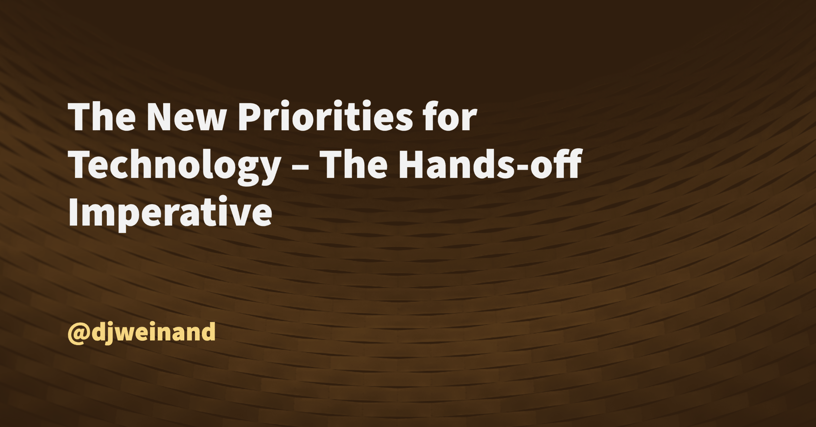In this blog, learn from leaders at HP and Intel the roles contactless and IoT technologies will take on as stores adapt.

Featured in This Exclusive Fireside Chat
![]() Dave. What kind of adoption rates do you expect for contactless technologies in the restaurant and retail industry over the next 6-12 months?
Dave. What kind of adoption rates do you expect for contactless technologies in the restaurant and retail industry over the next 6-12 months?
![]() Aaron. There are massive changes taking place in the retail and hospitality industries. Prior to COVID, there was already momentum behind contactless payments as can be attested by the growth in systems such as Apple Pay and Google Pay. With the new necessities around the sanitization and cleanliness of stores, the role of contactless is going to accelerate rapidly.
Aaron. There are massive changes taking place in the retail and hospitality industries. Prior to COVID, there was already momentum behind contactless payments as can be attested by the growth in systems such as Apple Pay and Google Pay. With the new necessities around the sanitization and cleanliness of stores, the role of contactless is going to accelerate rapidly.
From the self-checkout side, we'd already experienced a healthy cycle of adoption from the larger grocery chains. Further adoption in the segment will happen but at a slower pace than other segments. However, we'll be seeing a much greater adoption of self-checkout in the form of kiosks across all retail and hospitality segments as well as other verticals, including healthcare. Envision kiosk-based patient check-in in the very near future.
![]() Joe. While I agree with Aaron that contactless payments will pick up, there still needs to be a greater receptiveness of consumers to a new way to pay. I've experienced scenarios at restaurants that have adopted contactless pay and there will be a steep learning curve for some customers paying through contactless options.
Joe. While I agree with Aaron that contactless payments will pick up, there still needs to be a greater receptiveness of consumers to a new way to pay. I've experienced scenarios at restaurants that have adopted contactless pay and there will be a steep learning curve for some customers paying through contactless options.
At Intel, we're working hard to enable our end customers to deliver those kinds of services and capabilities in whatever way consumers want. I do think that contactless payment is going to be a key but what few have brought up is that the payments industry in the U.S. has to step up to adapt their payment schemes to enable broader adoption. From my perspective, doing so in the next 6-12 months will be a challenge.
----
![]() Dave. What are new use cases for IoT devices and applications as we reopen the economy?
Dave. What are new use cases for IoT devices and applications as we reopen the economy?
![]() Aaron. We're seeing several use cases emerge for IoT devices in the retail and hospitality sectors. These applications are related to many of the macro and technical changes we're seeing across the economy. For example, for the majority of retailers and restaurants, the adoption of omnichannel initiatives are table stakes. Operating across multiple channels, including stores, e-commerce, marketplaces, etc, makes inventory management very complex. This is where we see IoT playing a big role. There are opportunities to leverage edge-based devices as well as sensors in the store to enhance the visibility of inventory and you combine that with the online capabilities and knowledge of where inventory is at different points in the channel, it gives a much more holistic view. We also see IoT applications for theft detection and also just improving the in-store experience so we're very bullish on IoT going forward.
Aaron. We're seeing several use cases emerge for IoT devices in the retail and hospitality sectors. These applications are related to many of the macro and technical changes we're seeing across the economy. For example, for the majority of retailers and restaurants, the adoption of omnichannel initiatives are table stakes. Operating across multiple channels, including stores, e-commerce, marketplaces, etc, makes inventory management very complex. This is where we see IoT playing a big role. There are opportunities to leverage edge-based devices as well as sensors in the store to enhance the visibility of inventory and you combine that with the online capabilities and knowledge of where inventory is at different points in the channel, it gives a much more holistic view. We also see IoT applications for theft detection and also just improving the in-store experience so we're very bullish on IoT going forward.
![]() Joe. One of the new use cases we're seeing acceleration around is incorporating a thermal camera either at a kiosk or looking at the traffic as it comes into the store. The customers and partners we have in Asia who have these kinds of platforms and are implementing them are seeing some serious upside in growth. Because the application is so strong, we expect that this is going to be a new baseline technology for retailers and restaurants in a short time.
Joe. One of the new use cases we're seeing acceleration around is incorporating a thermal camera either at a kiosk or looking at the traffic as it comes into the store. The customers and partners we have in Asia who have these kinds of platforms and are implementing them are seeing some serious upside in growth. Because the application is so strong, we expect that this is going to be a new baseline technology for retailers and restaurants in a short time.
In addition, as Aaron pointed out, using IoT for inventory sensing will be a big use case as consumer expectations are evolving rapidly. The 'get what I want, when I want it' expectation is going to push these businesses to look at new technology like IoT devices to be incorporated in more traditional technologies such as cameras and traffic counters.
----
![]() Dave. How can technology enable the new delivery and curbside imperative?
Dave. How can technology enable the new delivery and curbside imperative?
![]() Aaron. Technology is going to play a major role and given the impact of COVID on retail and hospitality, in particular, curbside pickup and curbside delivery will expand way behind previous numbers. We're having many conversations with customers who are looking at ways to expand their ability to deliver on curbside.
Aaron. Technology is going to play a major role and given the impact of COVID on retail and hospitality, in particular, curbside pickup and curbside delivery will expand way behind previous numbers. We're having many conversations with customers who are looking at ways to expand their ability to deliver on curbside.
To enable these applications, mobile technology is going to be a major tool. From a hardware perspective, handheld mobile devices will enable associates to quickly confirm and deliver orders either curbside or at home. Of course, in our new world, these devices must be retail hardened to enable the type of medical-grade cleaning that is now required.
Also, as discussed earlier, payments are going to need to be integrated seamlessly into the process. Finally, many of our software provider partners have been rapidly developing more robust curbside and delivery options to address the industry need.
![]() Joe. Throughout the pandemic, we've seen that most of the businesses that had established a good mechanism and experience for consumers around order online, pick up curbside are generating significantly more business from new customers. Data shows that many of the consumers who may have not tried curbside pickup in the past have likely tried it through the pandemic. I expect this to continue and we're going to see greater adoption of curbside and delivery at both the retailer / restaurant level and consumer level.
Joe. Throughout the pandemic, we've seen that most of the businesses that had established a good mechanism and experience for consumers around order online, pick up curbside are generating significantly more business from new customers. Data shows that many of the consumers who may have not tried curbside pickup in the past have likely tried it through the pandemic. I expect this to continue and we're going to see greater adoption of curbside and delivery at both the retailer / restaurant level and consumer level.
What is required for a retailer to accomplish this? First, they better know where their inventory is. If the store takes an online order for a customer to pick up at their local store, that inventory needs to be at that store. If a customer places an online order and they have to wait, for say 3 days to pick it up, that is not going to be the kind of experience a consumer expects.
About the speakers:

Aaron Weiss
Aaron is a 20-year veteran at HP, the leader in POS for retail and hospitality
Joe Jensen
Joe is a 35+ year veteran at Intel, the leader in IoT and chip technologyTo view this or the four other blogs in video form please visit:
Reopening the Doors to Retail and Restaurants: Five Topics to Consider


 Aaron Weiss
Aaron Weiss 
 Joe Jenson
Joe Jenson  Dave Weinand
Dave Weinand 

